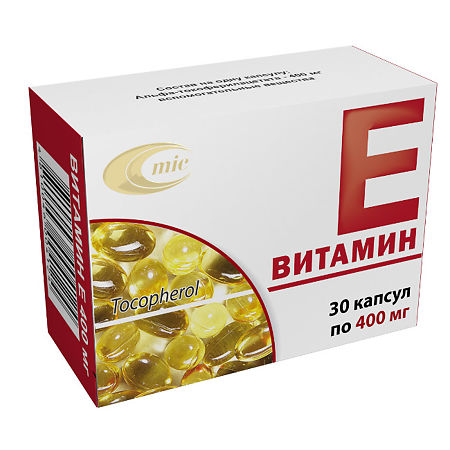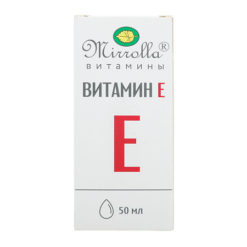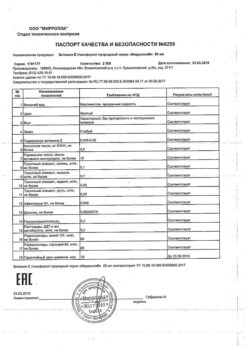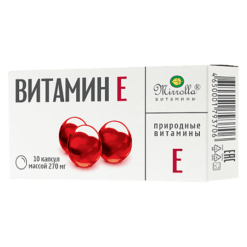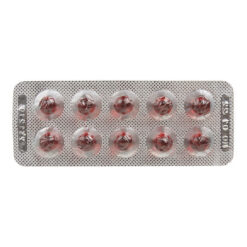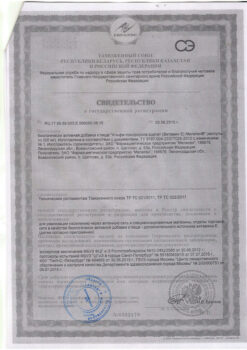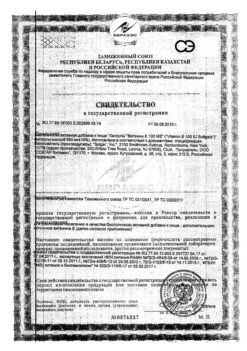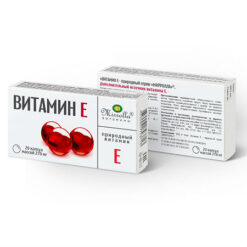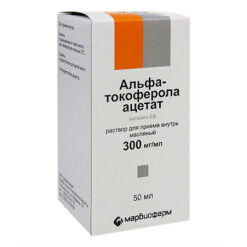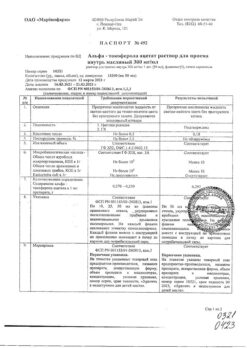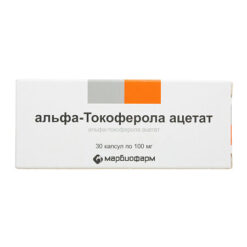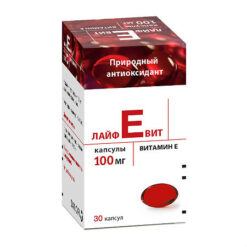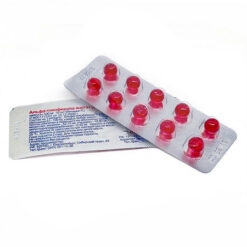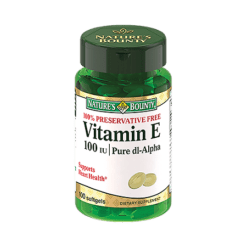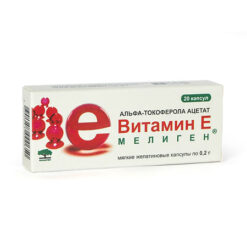Subtotal: €8.13
Vitamin E, 400 mg capsules 30 pcs
€5.73 €4.77
Out of stock
(E-mail when Stock is available)
Description
Vitamin E is an antioxidant, participates in cell proliferation, tissue metabolism, prevents hemolysis of red blood cells, prevents increased permeability and capillary fragility.
The drug prevents the development of atherosclerosis and degenerative-dystrophic changes in the heart muscle and skeletal muscle, improves nutrition and myocardial contractility, reduces myocardial oxygen consumption. Inhibits free radical reactions, prevents the formation of peroxides that damage cell and subcellular membranes. Stimulates the synthesis of heme and heme-containing enzymes – hemoglobin, myoglobin, cytochromes, catalase, peroxidase.
Participates in the metabolism of nucleic acids and prostaglandins, in the cell respiratory cycle and in the synthesis of arachidonic acid.
It improves tissue respiration, stimulates protein synthesis (collagen, enzyme, structural and contractile proteins of skeletal and smooth muscles, myocardium), protects vitamin A from oxidation, inhibits cholesterol synthesis, helps normalize blood plasma lipid levels. Inhibits the oxidation of unsaturated fatty acids and selenium (a component of the microsomal electron transport system).
Activates phagocytosis and is used to maintain normal erythrocyte resistance. In high doses it prevents platelet aggregation. It has a pronounced positive effect on the human reproductive system.
With insufficiency of vitamin E there is a decrease in the concentration of proteins in the blood serum and the content of nucleic acids in the liver and testes.
Human insufficiency of vitamin E can be caused by dietary habits (for example, lack of vegetable fats in food) or by various diseases, such as liver, pancreas, etc.
Pharmacokinetics
From the gastrointestinal tract approximately 50% of the administered dose is absorbed, the maximum level in the blood is created after 4 hours. Bile acids, fats, normal pancreatic function are required for absorption. During absorption it forms a complex with lipoproteins, which are intracellular carriers of vitamin E.
It enters mainly into the lymph, then into the general bloodstream, where it binds mainly with alpha1 and beta-lipo-proteins, partially with serum albumin. When protein metabolism is impaired, transport is hindered. It is deposited in all organs and tissues, especially in adipose tissue. It is metabolized in the liver to derivatives with quinone structure (some of them have vitamin activity). It is excreted in bile (more than 90%) and urine (about 6%) unchanged and as metabolites.
It penetrates through the placenta in insufficient quantities: 20 – 30% of the concentration in the blood of the mother enters the fetus’s blood. It penetrates into breast milk.
Additional information
| Shelf life | 3 years. |
|---|---|
| Conditions of storage | In a dry, light-protected place at a temperature of 15-25°C. Keep out of reach of children. |
| Manufacturer | Minskinterkaps, Belarus |
| Medication form | capsules |
| Brand | Minskinterkaps |
Other forms…
Related products
Buy Vitamin E, 400 mg capsules 30 pcs with delivery to USA, UK, Europe and over 120 other countries.


